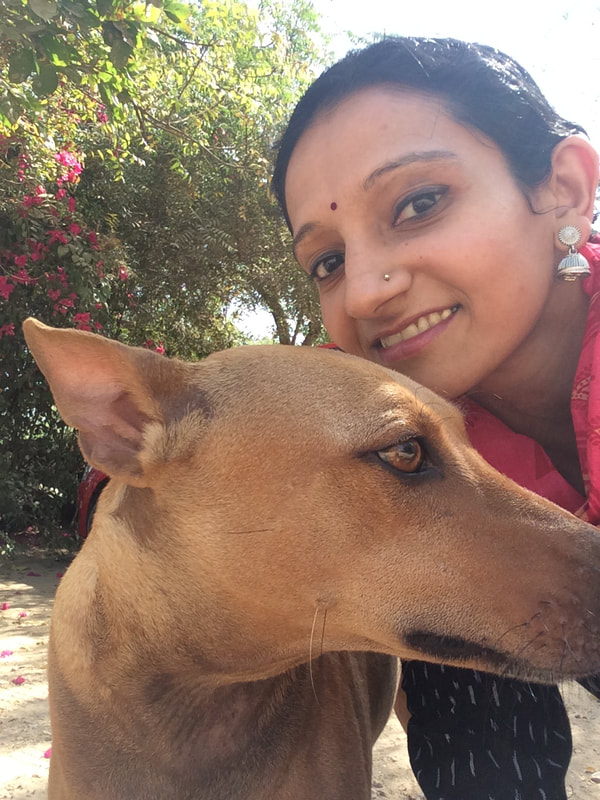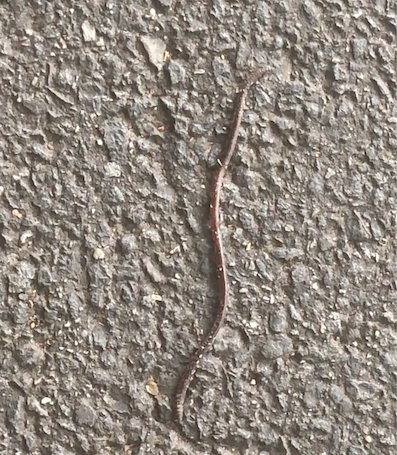|
The joy of movement While the evolution of movement was for survival (moving towards food, moving away from predators), no one can deny the sheer pleasure of moving, of dancing, of moving our bodies to the beat of music. Below, on the left, you can see a video of my pup playing in the grass on a spring day (with a smile on his face). On the right is a short piece I did at The Frederic Fleming House at W22nd Street in NYC for its residents. I love the participant to my right who is having so much fun listening to the music!
What I love about these videos is that it brings together seamlessly "Creatures on the move" for Vichaar and "Bharatanatyam for all. Movement has many benefits for physical health e.g. maintaining cardiovascular health, preventing falls, helping maintain balance, managing chronic conditions, and strengthening bones and muscles [1].
Movement has numerous benefits for mental health as well, including improved sleep and endurance, stress relief, increased stamina, and increased alertness [2]. The positive impacts of movement inform my work with senior citizens to promote creative aging in a program called Bharatanatyam for All. The scientific principle of synaptic plasticity (the capacity of the brain to change with experiences), the positive impact of movement for mental health, and the power of self-expression lie at the core of my work; these benefits of Bharatanatyam are what I hope to distribute to all.
1 Comment
My inspiration for creatures on the move  Sloka's hands showing a pigeon Sloka's hands showing a pigeon My inspiration for Creatures on the Move comes from helping my mother take care of the stray animals around our apartment, and later working at Animal Help Foundation, a spay-and-neuter shelter in Ahmedabad, where I was responsible for taking care of hundreds of animals every day. Another thing that attracts me to study animal movement is the sheer diversity in the pace, gait, and manner of movement that animals display. From the sinuous movement of the snake to a raptor soaring in the sky, to a squirrel that jumps around, the study of movement reminds me of Darwin’s take on the diversity he saw around him and noted in The Origin of Species [1,2]. There is grandeur in this view of life,
with its several powers, having been originally breathed into a few forms or into one; and that, whilst this planet has gone cycling on according to the fixed law of gravity, from so simple a beginning endless forms most beautiful and most wonderful have been, and are being, evolved. This sheer diversity in the lifeforms around us in terms of what they are, what they eat, and how they move is one of the things I love about teaching evolution at the American Museum of Natural History. After all, what could be more interesting than understanding and exploring the natural world? And how lucky am I to study and understand this beauty around us through science, and express it through dance? In this series, we will look at birds, insects, worms, and mammals, explore their movements, and how these movements can be used in Bharatanatyam. Hand gestures for some of these animals, e.g. pigeon and bee are routinely taught to students of Bharatanatyam. Gestures for fireflies, for example, are not routinely taught but exist in the Abhinaya Darpana [3], and. for animals like bats and squirrels, I developed the hastas through observation and experimentation. What I loved about this process was thinking of Bharatanatyam and the hand gestures we use to make up a living, breathing, evolving language. In a future episode of Vichaar, I hope to talk about language acquisition, how we learn and retain languages, and how dance is a language where movement comes to life. How do worms move?
I love seeing worms come out after a good rainstorm! On a recent walk, I found a worm (video above). While I am not sure about all details about the worm, I have been able to identify it to the best of my ability as an earthworm known as the 'Asian jumping worm'. These worms are known for their “theatrical” behavior as they thrash around when handled. (I was unable to confirm this though, as I didn't touch the worm) [1]. The Asian jumping worm is an invasive species that made its way to the US from East Asia. These small, unassuming worms are invasive creatures and can change the composition of the soil and “reengineer” the soil around them [1]. One may wonder if worms have brains. They do have brains, though they are not too complex. Earthworms (and leeches) fall under a phylum called the 'annelids' [2]. The brains of segmented worms consist of two lobes, and the sensory and motor nerves originate from these cerebral ganglia (bundles of nerve cells) and reach the rest of the body [2]. Worms have a characteristic wave-like motion. The reason their movement is wave-like is that they have a segmented body. Worms have longitudinal muscles, circular muscles, and structures known as “setae” (bristle-like structures) on the outside of their bodies. Setae help the worms anchor to the location and repetitive contraction and release of muscles helps them elongate and contract their bodies, which helps them move [3]. Even a simple organism like the worm is so complex, so much so that the transparent roundworm Caenorhabditis elegans (C elegans) is routinely used to map the nervous system [4] and study aspects of aging [5] and longevity [6]. In the video on the top left, you will see an Asian jumping worm on its way in uptown Manhattan. The video on the top right shows my interpretation of the worm’s movement with my hands. Citations:
How bats move Bats, the only flying mammals, have had a special place in my heart for a long time. At one 'Save the Birds' Campaign at Animal Help Foundation for the kite flying season of Uttarayan, we once rescued a baby bat that was trapped in kite strings. I still remember how soft the baby bat was as we were unraveling kite thread around its body. Thanks to vampire lore, these magnificent creatures are universally hated, but they are critical for pollination of many fruits and crops we love – chocolate, mango, avocado - and they are critical for keeping the number of night insects in check [2]. Bats have two adaptations that make them extremely special: powered flight and echolocation [3]. Bats belong to a group of animals called the Chiroptera (Kir-op-tera), which literally means “hand wing”. These nocturnal animals comprise 20% of the mammal species worldwide, and there are more than 1,300 species of bats currently [4]! The aerodynamics of bat flight is the topic of intense investigation. Their wings are actually structures like hands that are adapted for flight. If you see slow motion videos of how bats move (and these videos are absolutely amazing), you can see how they are using their wings to “swim” through the air. While bats and birds both fly, the way they fly is very different. Additionally, the structure of bird feathers is quite different from that of bat wings. The wings of the bat offer intense maneuverability and they can even fold their wings. they move by “rowing” through the air. The maneuverability comes in the form of “up stokes” and “down strokes” that allows them to move much faster and in a much more agile manner as compared to birds [5]. Citations:
Bees dance to communicate! Bhramara hasta in Bharatanatyam to show a bee Bhramara hasta in Bharatanatyam to show a bee We looked at evolution of movement to find food, and get away and to stay away from predators. But there’s another reason animals move, and that’s to communicate to other individuals of their group. In this article, we will look at the movement of bees. Though small, bees are incredibly sophisticated and complex. Bees live in colonies and exhibit complex social and communication behaviors; given their relatively small brains, bees are used as a model to better understand cognition [1]. Bees are unique for many reasons, one of them being that they dance to communicate! Bees need a way to tell other bees where to find nectar and pollen. Bees use dancing as a way of social communication and they are able to convey to other bees that nectar or pollen is found at a particular place. There is an urgency to this communication, as resources may be available only for a limited amount of time. Bees have a complex and highly specialized colony structuring comprised of “scout” bees and “forager” bees. “Scout bees” are older females that are very strong flyers and experienced with the geography of the area around the hive. These bees fly and search for spaces to investigate. “Forager” bees serve as gatherers of food [2]. First, the scout bee gets the nectar and regurgitates some to the other bees in the hive. After this, she needs to advertise to the other bees the source of the nectar. The scout bee has two types of dance: the "round" dance and the "wiggle" dance [2]. The “round” dance is done to signal food that is closer to the hive, and the “waggle” dance for food farther away from the hive. While the round dance does not give any directional information, the waggle dance tells other bees about the location of food or nectar relative to the direction of the sun (the azimuth). The waggle dance also communicates the amount of energy the other bees would have to expend to get to the food source [2,3]. Experiments on bees and other insects have revealed a part of the brain called the “central complex” as the navigation center that helps insects make these kinds of decisions [4]. The central complex is important to help bees orient themselves to a flower and spatial processing, i.e., figuring out where they are in space [5]. In Bharatanatyam, we use the Bhramara hasta to show a bee. In fact, in class we are learning a piece where the central character is requesting a bee to take her message to Lord Shiva. Citations:
|
About SlokaMy name is Sloka. I am a neuroscientist and Bharatanatyam dancer; you can find more about me here. Archives
June 2024
|








